Physical Address
304 North Cardinal St.
Dorchester Center, MA 02124
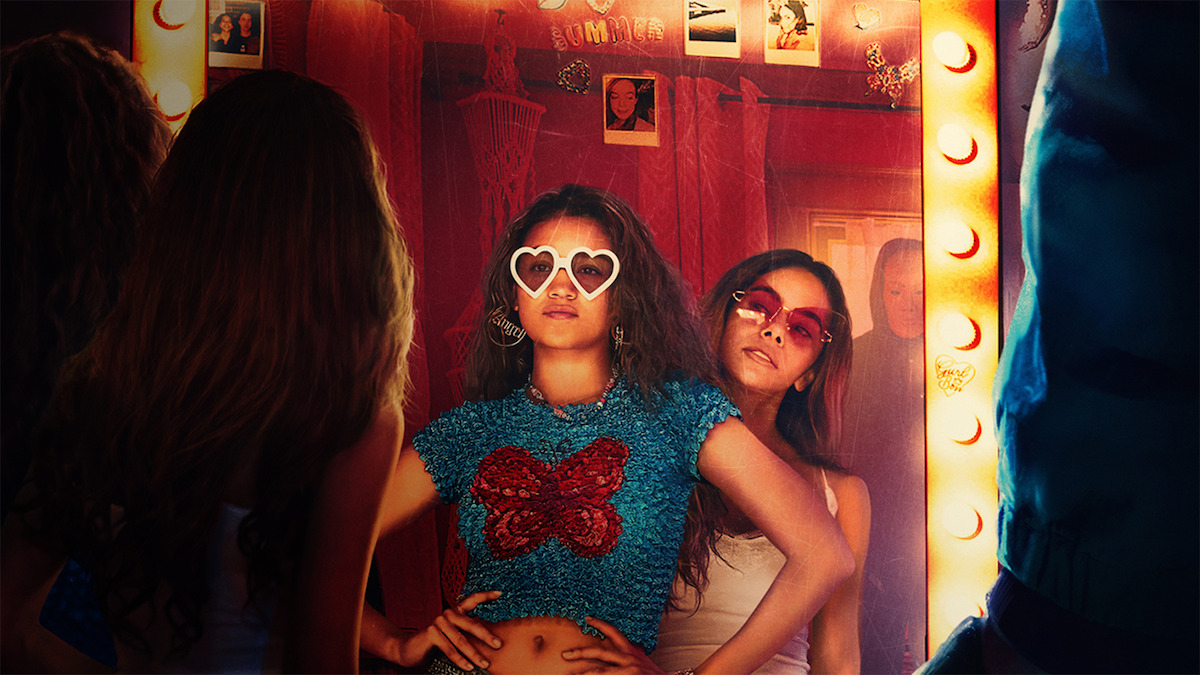
Spoiler Warning: This review includes significant plot details that may reveal crucial moments of the movie.
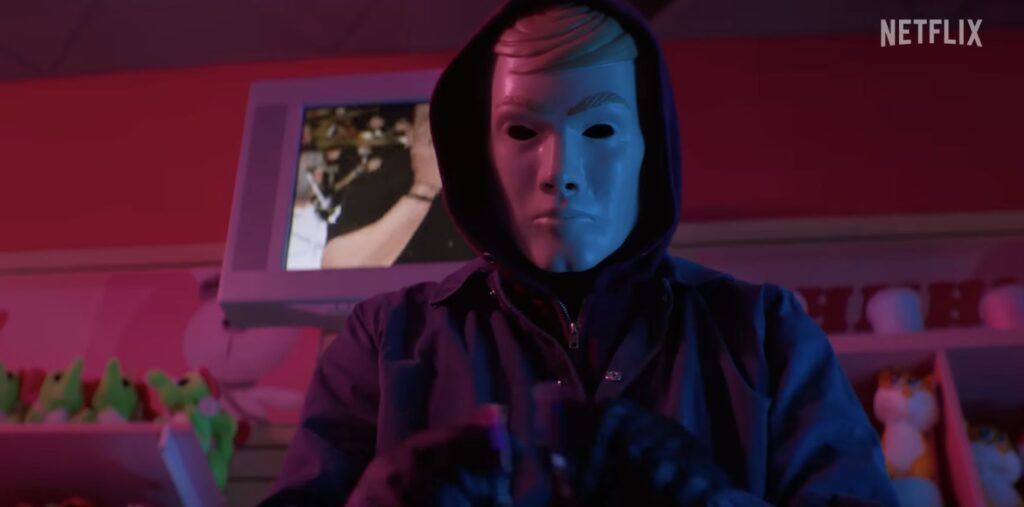
After testing the waters with The Manhattan Alien Abduction on Netflix, I quickly realized it wasn’t worth sticking with—despite my interest in alien mysteries, this one just didn’t hit the mark. Ready for something else, I browsed Netflix and noticed Time Cut, a new movie already climbing the ranks to number two as of November 2, 2024.
Intrigued, I clicked on the trailer and was instantly pulled in by a detail that speaks to any nostalgic heart: the film is set in 2003, with Avril Lavigne’s Complicated setting the tone. The song immediately transported me back to my early twenties, fresh out of high school, on the cusp of adulthood with a sense of freedom and endless possibilities. Hearing Complicated stirred memories of that time and reminded me of my younger self, including that very relatable crush on Avril Lavigne. For this time-travel element alone, I was already sold.
Wanting to know more, I looked up the team behind Time Cut and was surprised to find that it was directed by Hannah MacPherson, known for her work on T@gged and the horror anthology Into the Dark: Pure. Produced by Matt Kaplan (To All the Boys I’ve Loved Before) and Christopher Landon (Happy Death Day, Freaky), the film promises a unique genre blend that could appeal to fans of both horror and sci-fi.
I’m usually not one for horror, and while the movie’s themes of sisterhood and loss didn’t immediately draw me in, the early-2000s setting and the promise of a supernatural twist intrigued me. The filmmakers have created a blend of slasher thrills with a nostalgic look back at 2003, combining suspense with a hint of humor in a way that feels fresh.
The cast of Time Cut was all new to me, which actually added to my excitement—I get to experience their performances with no preconceived notions or expectations. Leading the cast are Madison Bailey and Antonia Gentry as the two sisters navigating this time-travel horror, joined by Griffin Gluck and seasoned actors Michael Shanks and Rachael Crawford.
Filmed in Winnipeg, the movie’s eerie atmosphere seems perfect for a horror-thriller. Despite not knowing these actors beforehand, I’m glad I get to see them in a fresh light, with nothing to distract from their roles in this unique story. While I wouldn’t typically go for a horror film, Time Cut has me hooked purely for the chance to revisit that nostalgic era, and I’m eager to see how the cast and creators bring this blend of horror and sci-fi to life.
Starting Time Cut, I was instantly transported back in time by Fat Joe’s What’s Luv? playing over the opening scene. Ironically, this was a song I couldn’t stand back in my youth. I was all about bands like Weezer, Green Day, Blink-182, and MXPX—pop songs just weren’t my thing. But hearing What’s Luv? now gave me an unexpected wave of nostalgia and put me in a good mood.
I felt young again, as if I’d been thrown back to 2003, a time when I was still 19, working at a National Guard recruiting office and taking classes at community college. The scene opens with Summer, the film’s lead, heading toward a barn for a “Spring Fling” dance, with a date stamp of April 18, 2003—a fun, almost surreal reminder of my own early twenties.
As the scene unfolds, Summer talks with a boy named Quinn about a local serial killer and the recent death of her best friend. Quinn, clearly interested in her, misses his chance to ask her out when they’re interrupted by another boy, Ethan. The dynamics between these characters are both tense and light, setting the stage for a teenage horror story with a hint of romantic angst.
Ethan, in a somewhat awkward move, gives a toast to the party as a tribute to the kids killed by the serial killer. Summer, visibly upset and unable to sleep due to her grief, finds herself frustrated with Ethan’s seemingly detached demeanor. It’s here that the killer—masked and lurking—appears in the background, watching Summer with a cold detachment that hints at what’s to come. The party is cut short when the cops show up, and soon after, Summer is attacked in the bathroom by the masked figure, barely escaping as he chases her through the barn.
As I watched, I found myself analyzing the cinematography, which gave off a very Nickelodeon-esque feel—a clear, straightforward shot composition without the shaky, suspenseful angles typical of horror films. The pacing was quick and deliberate, with the camera always providing a clear view of the killer’s location relative to Summer, her path to escape, and the looming danger.
Instead of immersing viewers in the chaotic, disoriented perspective of the protagonist, the scene played out more like a chase in a family-friendly thriller. Suspicious of the tone, I paused to check the rating and saw that it was rated TV-14—a decision that, in my opinion, represents a missed opportunity.
By choosing a TV-14 rating, the filmmakers effectively limited the film’s potential to captivate the millennial audience, who would likely appreciate a more intense, mature horror experience. The nostalgic elements, which feel almost tailor-made for millennials like myself, are somewhat wasted on today’s teenage audience, who don’t share that same connection to 2003. Millennials, now in their 30s and 40s, are the ones who remember these songs and cultural references fondly, yet the film’s TV-14 constraints dilute the horror elements, giving it a “middle of the road” feel that fails to fully engage either teens or adults.
This choice is especially puzzling given that many teens today already consume mature content. A 2017 survey by Common Sense Media reported that 60% of teens watched media meant for adults, highlighting a significant trend of underage consumption of mature-rated material. If the producers had aimed for a solid R or MA rating, creating a truly thrilling horror movie for millennial viewers, I believe the film could have resonated far more deeply.
Such a film could have attracted millennial parents who would perhaps choose to re-watch it with their teens later on, offering a shared nostalgic experience but within a more mature, impactful context. Instead, Time Cut feels caught between two worlds, leaning too heavily into a watered-down, adolescent style that strips away the suspense and intensity needed to make it truly memorable.
The opening scene, despite its nods to 2003, hints at the limitations that follow, positioning the film as a safe, sanitized horror experience rather than the genre-defining thriller it could have been. While it’s still enjoyable, especially for parents wanting to watch with their teens, the potential for a horror classic reminiscent of Scream is lost in the decision to play it safe.
For a story rich in nostalgic elements and aimed at an audience that’s grown up, it’s disappointing that Time Cut doesn’t take full advantage of the horror genre’s capacity for suspense, complexity, and depth. In my view, the choice to cater to a younger audience with a TV-14 rating holds back what could have been a far more compelling and mature cinematic experience.
The movie dives deeper as Summer finds herself cornered in the barn by the masked killer, a suspenseful chase scene that ends with her tragic death. Just as he strikes her down, the screen goes black, and the title Time Cut appears. This brutal introduction quickly shifts to a quieter scene in a bedroom, where we meet Lucy—Summer’s younger sister—waking up with a timestamp of April 2024.
Lucy, now a teenager, narrates her life, sharing her ambition to earn a NASA scholarship and revealing the lasting impact her sister’s murder has had on her family and town. Her musings about black holes as metaphors for the loss of her sister hint at the sci-fi twist to come. Right away, I assumed this would be more than just a tragic story—it seemed like Lucy’s NASA dreams might involve an actual time or space-bending journey. And soon enough, that hunch was proven right.
As Lucy heads to school, the film establishes the changed atmosphere in the town since the murders. A pair of girls gossip about the victims, reminiscing about places that once held meaning, like the mall, only to mock it with a casual “Ew, the mall.” It’s an interesting comment on how teenage culture has evolved over the years—something as iconic as a mall, once a bustling center of social life, is now dismissed. Lucy, however, remains firmly connected to the past, visiting Summer’s untouched bedroom, which is like a time capsule from 2003.
I couldn’t help but feel the tug of nostalgia myself as Lucy examines relics from that era: a Buffy the Vampire Slayer poster, an old turquoise Mac, and a Panasonic CD player complete with a mix CD labeled “Summer.” It brought me back to the early 2000s, spending hours on Napster or Limewire downloading songs. Just seeing that CD player and imagining the stacks of burned CDs we all used to have made me smile. When Lucy hits play and A Thousand Miles by Vanessa Carlton starts, it’s like a trip back in time—this was one of those songs you couldn’t escape back then, playing on every radio and in every store.
As Lucy explores, she discovers a hidden compartment in the floor containing a mysterious note that reads, “You will regret this,” signed by “E.” This small touch adds a layer of suspense, suggesting that the murders might have had a reason beyond random violence. Soon, the family heads out to Olive Garden, a restaurant where they seem to be regulars.
The staff knows them by name, and it’s clear the family dynamic has been shaped by Summer’s loss. When they talk about cooking, Lucy’s mom reminisces about how she used to cook with Summer, hinting that she hasn’t done so as often since the tragedy. Lucy, in turn, shares that she’s been accepted into the NASA program, but her dad hesitates, suggesting she consider a local scholarship instead—a small, subtle reminder of how the family remains protective, unwilling to let go.
As they pay a visit to Summer’s shrine at the barn where she died, a sudden noise and strange light burst from within, drawing Lucy into the barn. Inside, she finds what looks like an impressive yet simple time machine, emitting a laser beam that transports her back to 2003. The special effects are surprisingly well done; instead of some over-the-top contraption, the time machine feels both futuristic and understated, adding to the believability of the moment.
Lucy realizes she’s back in time as she encounters familiar 2003 details—the unmistakable sight of a yellow Volkswagen Beetle, a car I remember seeing everywhere back in the day. It’s funny to think that these were once everywhere, a staple of early-2000s streets, yet now you hardly see them.
Lucy heads to her high school, absorbing all the early 2000s fashion. The boys are mostly dressed in button-up shirts over T-shirts—something I remember well, though I do think the jeans look a bit more fitted than they actually were back then. By the time I graduated in 2002, baggier jeans were still in style, so I’m not entirely sure how accurate the wardrobe is here, but I’d be curious to hear other viewers’ takes on it. One small detail that made me laugh was hearing “trippin” used as slang again—a phrase I haven’t thought of in ages but definitely remember saying once or twice.
Back in the science lab, Lucy spots Quinn, who starts explaining theories about time travel and paradoxes. She decides to confide in him, revealing that she’s from the future and even shows him her smartphone. His reaction is one of pure amazement, and I have to say, Griffin Gluck, who plays Quinn, brings a lot of life to this scene. His performance throughout adds an urgency and authenticity that makes him one of the most engaging characters. He brings a unique energy that counterbalances Lucy’s more introspective side, making the scenes feel more dynamic and alive.
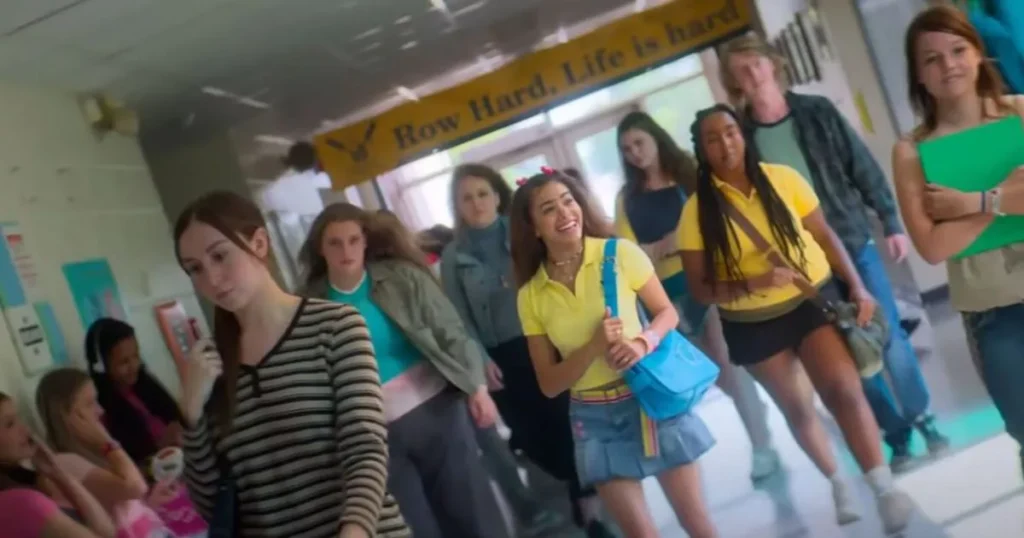
Lucy’s encounters with Summer are equally fascinating to watch. When she first talks to her, there’s this profound mix of awe and longing on Lucy’s face. Madison Bailey, who plays Lucy, does an incredible job capturing that moment—it’s like she’s meeting a ghost she’s only known through memories. Soon, Lucy ends up back at her house, stepping into a space frozen in time before she was even born. Her interactions with her family are both poignant and surreal, as they don’t recognize her, yet she knows so much about them.
Dinner with her “family” reveals the contrasting dynamic between the past and her own life. Her mom proudly shares how cooking with Summer is her favorite time of the day, which hits Lucy hard, knowing her own family life feels fractured. She looks heartbroken, and her sadness is palpable—a powerful moment that underscores how much has been lost since her sister’s death.
The film nails the emotional weight here, particularly as Lucy reflects by the lake, telling Summer that “her parents are nothing like my parents.” It’s a clever line, showing how Summer’s death has changed everything, even though, on the surface, they’re the same people.
In her 2003 bedroom, Lucy and Summer bond over fashion, trying on various outfits in a scene filled with early 2000s nostalgia. Teenage Dirtbag by Wheatus plays in the background, another blast from the past I couldn’t help but smile at. I hated this song back then—the singer’s voice grated on me—but now it’s a funny reminder of simpler times.
At one point, Lucy remarks that she looks like Hannah Montana, only for Summer to ask, “Who?” I found this part slightly confusing, but after pausing to check, I remembered Hannah Montana didn’t actually debut until 2006. This subtle but playful jab at time differences highlights Lucy’s out-of-place position in the past, reminding us that she truly is a visitor in this world. When she hints to Summer about knowing something bad is going to happen, it’s clear she’s hoping to change the future.
As Time Cut enters its second act, I realize I’m becoming unexpectedly invested in Lucy’s journey. Watching her navigate 2003 feels like a mix of nostalgia and wish fulfillment, and part of me is rooting for a “Disney ending”—one where she somehow manages to bring Summer back or ends up in a future where they’re both alive. It’s rare to see a horror film that leans so heavily into family dynamics and nostalgia, and while the tone may feel lighter than expected, there’s a growing depth to Lucy’s journey that keeps pulling me in.
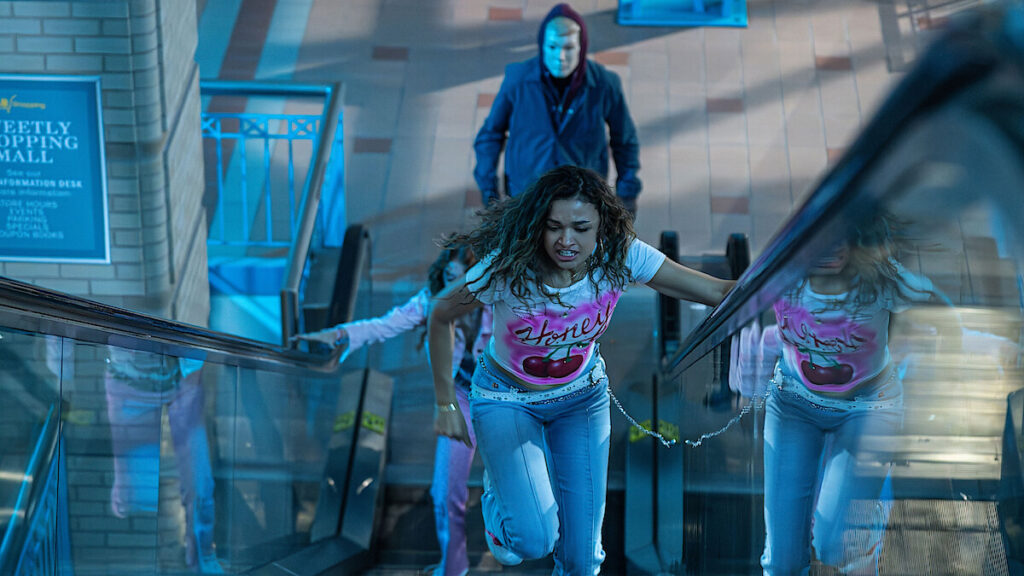
As Lucy tracks down Summer’s friends at the mall, arriving just as it’s closing. She’s trying to save them, but unfortunately, she’s too late to prevent the death of Brian, another one of the killer’s victims. Val, another friend of Summer’s, narrowly escapes with Lucy, though the killer eventually catches up, killing both Val and a security guard in a suspenseful chase.
From here, Lucy takes refuge on Quinn’s boat, confiding in him that she feels responsible for the guard’s death, noting how things are already going off course. Her mother has always suspected Ethan, but Quinn warns her that she may have to let events unfold as they originally did.
In a bid to take control, Lucy sneaks into her family’s home to retrieve her dad’s key to the SONR building, where the time machine may have originated. However, Summer confronts her, demanding answers. It’s a tense yet touching moment as Lucy finally tells her the truth—that she’s Summer’s sister from the future. The revelation is met with disbelief but also curiosity, and Lucy shares a note she’d found earlier, signed by “E.” Summer insists she’s never seen the note before, adding to the mystery.
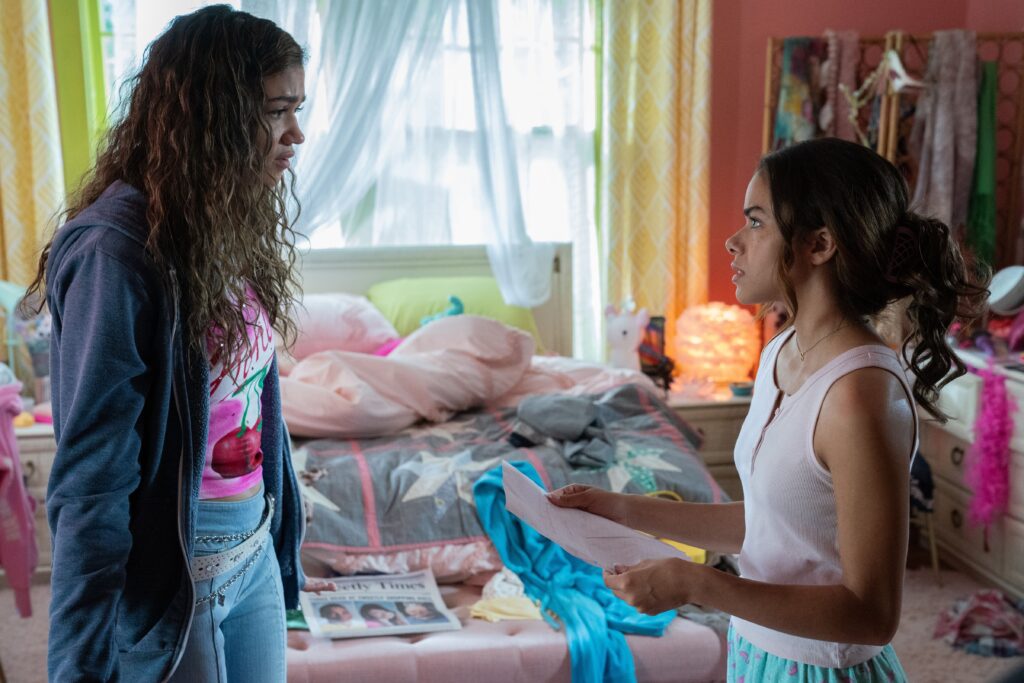
Lucy leaves and returns to Quinn’s garage, where he’s working on fixing the time machine. Meanwhile, Summer stumbles upon the same note in Ethan’s locker, realizing Lucy’s story is true. Back in the garage, Lucy has a brief moment of humor as she reacts to the nostalgic sounds of a dial-up modem—a small, funny reminder of how technology has evolved. The movie peppers in these nods to the early 2000s, like Summer’s suggestion to invest in Blackberry, that only millennials or older viewers would fully appreciate. These references build the charm of the story, making it both nostalgic and relatable for anyone who grew up in that era.
Determined to protect her sister, Lucy, Quinn, and Summer’s friend Emmy head to the Marine Museum, where Emmy is cleaning after hours. The killer’s presence builds genuine suspense here, with Emmy oblivious to the lurking danger as she listens to music on her headphones. Summer, watching from across the museum, tries to warn her friend but is too far away. This scene stands out for its solid horror elements—the tension, the suspense, the isolated environment. It’s one of the rare moments in the film that taps into the classic slasher vibe. Thankfully, Lucy and Quinn manage to save Emmy, but they know the danger isn’t over, and Summer is still in the killer’s sights.
Lucy and Summer take a moment to connect over a meal at Olive Garden, where Summer reveals that she’s a lesbian, prompting Lucy to reassure her about the future and how much more accepting society becomes. It’s a heartwarming scene, especially as Dolores, the server, makes another appearance, adding a touch of familiarity and community. Lucy spends the night at Summer’s, and they share a rare, genuine connection, deepening Lucy’s resolve to keep her sister safe.
However, a bittersweet moment arises when Lucy asks her parents if they’d ever thought of having another child, to which they respond that one was enough, not realizing they’re hurting Lucy. Madison Bailey captures this subtle pain beautifully, showing the internal conflict of wanting to belong yet knowing her presence hinges on her sister’s tragic fate.
When Lucy returns to Quinn’s garage, he confronts her, questioning the wisdom of saving Summer if it means Lucy might never be born. Quinn’s struggle is palpable; he can’t bear the thought of letting Summer die, but Lucy’s existence is equally precious to him. Lucy ultimately decides to warn Summer, explaining the paradox—that her own life is on the line if Summer survives. It’s a poignant decision, capturing the film’s emotional depth as Lucy prioritizes her sister’s life over her own.
In the climactic showdown, Lucy and Quinn head to SONR, hoping to unravel the mystery behind the time machine, which they now suspect belongs to the killer. Meanwhile, Summer lures the masked figure to the barn from the opening scene, setting up a trap. I found myself fully invested in these characters by now, rooting for both sisters to survive, hoping that Lucy’s mission wouldn’t end in tragedy.
The twist that follows, though, is a stroke of brilliance: Quinn realizes that the killer is actually his own future self. This revelation is chilling, and I genuinely didn’t see it coming. It’s a fantastic twist that raises questions about fate, trauma, and the dark paths that life can take. Future Quinn, fueled by resentment and heartbreak, has become the very monster they’ve been trying to stop.
As the two Quinns confront each other, it’s a battle of wills, with present-day Quinn promising Lucy he’ll never turn into that monster. Lucy ultimately pulls Future Quinn into the present, leading to a visceral showdown in a parking garage. The fight is intense, and Lucy ends it by stabbing Future Quinn. It’s a powerful moment of closure, as Lucy finally breaks the cycle, returning to the past to inform Summer and her friends that the slasher is dead.
In the end, Lucy decides to stay in 2003, embracing the NASA scholarship and choosing to live out her life alongside her sister. The final scene, with Lucy and Summer looking out over the water together, feels like a fitting, almost Disney-esque ending. Despite its TV-14 rating, which I initially saw as a drawback, the film finds its strength in emotional depth and character-driven storytelling rather than pure horror. Time Cut may not be perfect, but it manages to capture something special—an exploration of family, loss, and second chances.
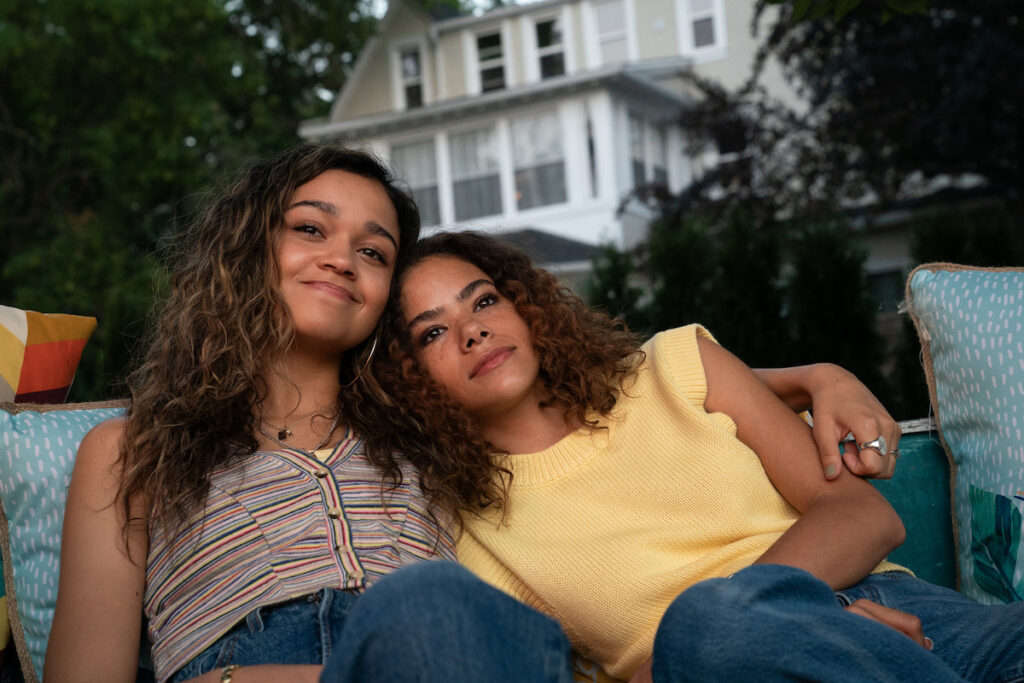
Reflecting on the film, I realize how much I enjoyed Lucy’s journey, even if it’s not the typical horror movie experience. There’s something beautiful in her choice to stay in 2003, a sentiment that resonates with many millennials who often look back fondly on that era. Time Cut becomes a nostalgic escape, a chance to revisit a simpler time. While it may not have had the intensity of an R-rated thriller, I understand the reasoning behind the rating.
It’s a film that finds its audience in those who remember the early 2000s, those of us who still feel connected to that era. If you’re nostalgic for the time period or enjoy a family-centered storyline, Time Cut is worth a watch. However, for the typical male viewer or horror purist, it might not be the best fit.
As a 41-year-old father with a daughter, I found enough here to be entertained and even moved. Time Cut isn’t groundbreaking, but it’s a heartfelt film with a unique twist on time travel and a touching message about family bonds. It’s a solid choice for anyone who feels the pull of the past and wants a little bit of sci-fi with a side of nostalgia.
Click here for my latest posts!